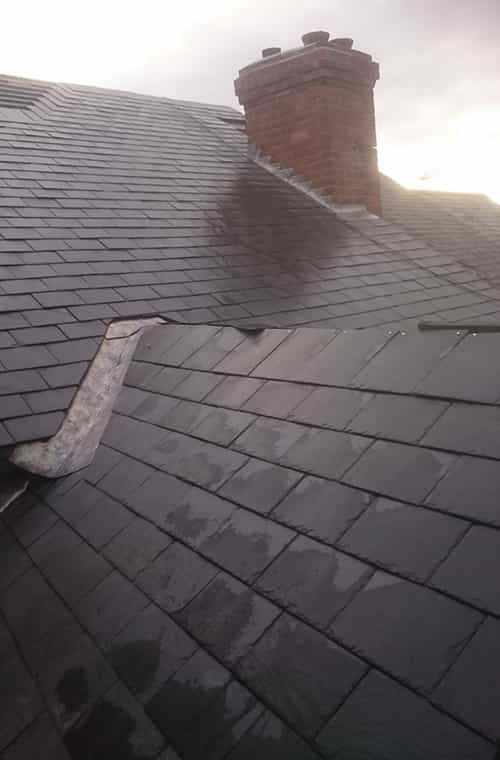In part 1, we gave a very brief summary of the evolution of roofing from primitive turf to more modern tiles. Join us, roofing contractors in Nottingham, in part 2, where we continue the journey and explore some more technologies!
Slate
Slate is a layered, homogenous, metamorphic rock that is found naturally in the earth. Due to the nature of slate, it has two “lines of breakability”, meaning it is possible to split into thin sheets that are still very tough and durable. These natural properties meant that it was relatively easy to create roof tiles. Slate has been mined for centuries in the UK, typically in mountainous locations. Because of this localisation and the fact that slate was extremely difficult to transport, slate technology was only able to be used close to the supply areas. As with clay tiles, the industrial revolution allowed mass-production of slates, that could be sent all over the country, particularly to developing areas. Another problem with the heaviness was that structures had to be incredibly strong to hold up a complete slate roof.
While slate somewhat declined in the early Twentieth Century with the emergence in popularity of clay and concrete tiles, it has had a resurgence and is likely to be popular well into the future. Slate roofs are chosen mostly for their aesthetic value and character, but they also boast being completely fire proof, an electrical insulator and waterproof. Most slate used in England and the UK today is imported from Spain, China and Canada, as it’s cheaper to import than to buy locally.
Concrete
Concrete tiles emerged as another alternative in the Twentieth Century and have since become incredibly popular. Suddenly, there was an option where tiles could be manufactured that were very rigid, fire proof and had a long lifespan. Cement based products were not always easy to make, being prone to bad workmanship, and it’s not easy to tell on appearance whether the tile is good quality or not. Nowadays, however, they’re incredibly uniform. Concrete is very heavy, but with modern structural materials, this isn’t really problem for the majority of modern builds. It ends up being a worthwhile trade-off with strength and rigidity, resistance to the elements and customisable shapes and colours.
Over time, concrete has established itself as the go to option, with the ability to create tiles of all shapes and styles. Depending on how it is mixed, the colour and appearance can be altered to resemble other materials. Pigments can be added to match colours of traditional clay tiles, or numerous other colours of your choice. Not only this, but modern manufacturing means the tiles are incredibly uniform, so you can be less worried about cracks, leaks and so on. Concrete tiles now account for around 90% of all roofs in Europe and is growing rapidly in popularity around the rest of the world.
Transport
Although not directly to do with roofing, as the infrastructure of our transport systems improved, the general choices of tiles shifted hugely. Previously heavy materials like slate, clay and eventually concrete were easily moved around via trains to all areas of the country. No longer were people stuck with more vulnerable roofs but could enjoy the feeling of comfort that much stronger and wear resitant materials brought with them. Thatch has been all but disappeared in the UK, but still exists in rural areas as a lovely reminder of our history.
Other technologies
Although concrete is overwhelmingly popular, it is not the only choice and many still go for alternatives. The uniformity of concrete tiles can be seen as boring – some choose materials like slate because of its more natural charm. Lightweight metal roof tiles are also an option, which are brilliantly resistant to wear but without the huge weight of other tiles, meaning they put much less stress on the building. They are virtually maintenance free and have an excellent lifespan. Metal tiles can create the authentic look of old fashioned styles, but with maximum functionality. However, they’re more expensive as a result! Either way, a good Nottingham roofing company should offer a good range of options.
The future of roofing
Who knows where the future of roofing will take us? Concrete tiles have proven their worth and remain dominant in the market, but perhaps if metal roofing becomes cheaper it’ll also grow in popularity. As things tend to move in phases over periods of time, perhaps we’ll see the reemergence of slate tiles as people move away from the uniform and more towards the quirky. Check us out on checkatrade, and also at the social media links below!

